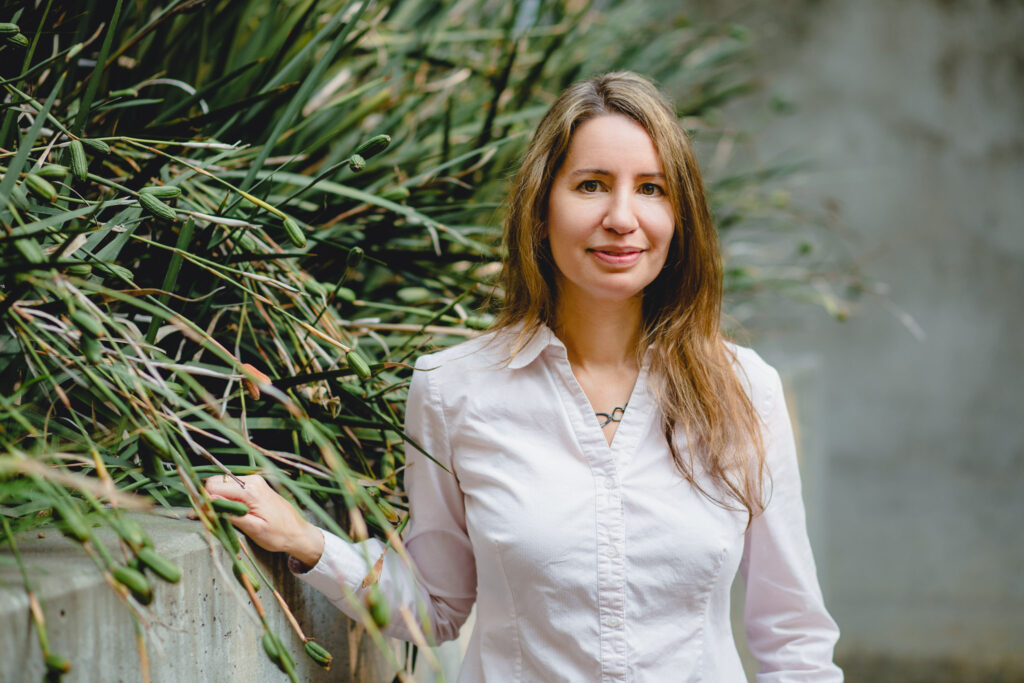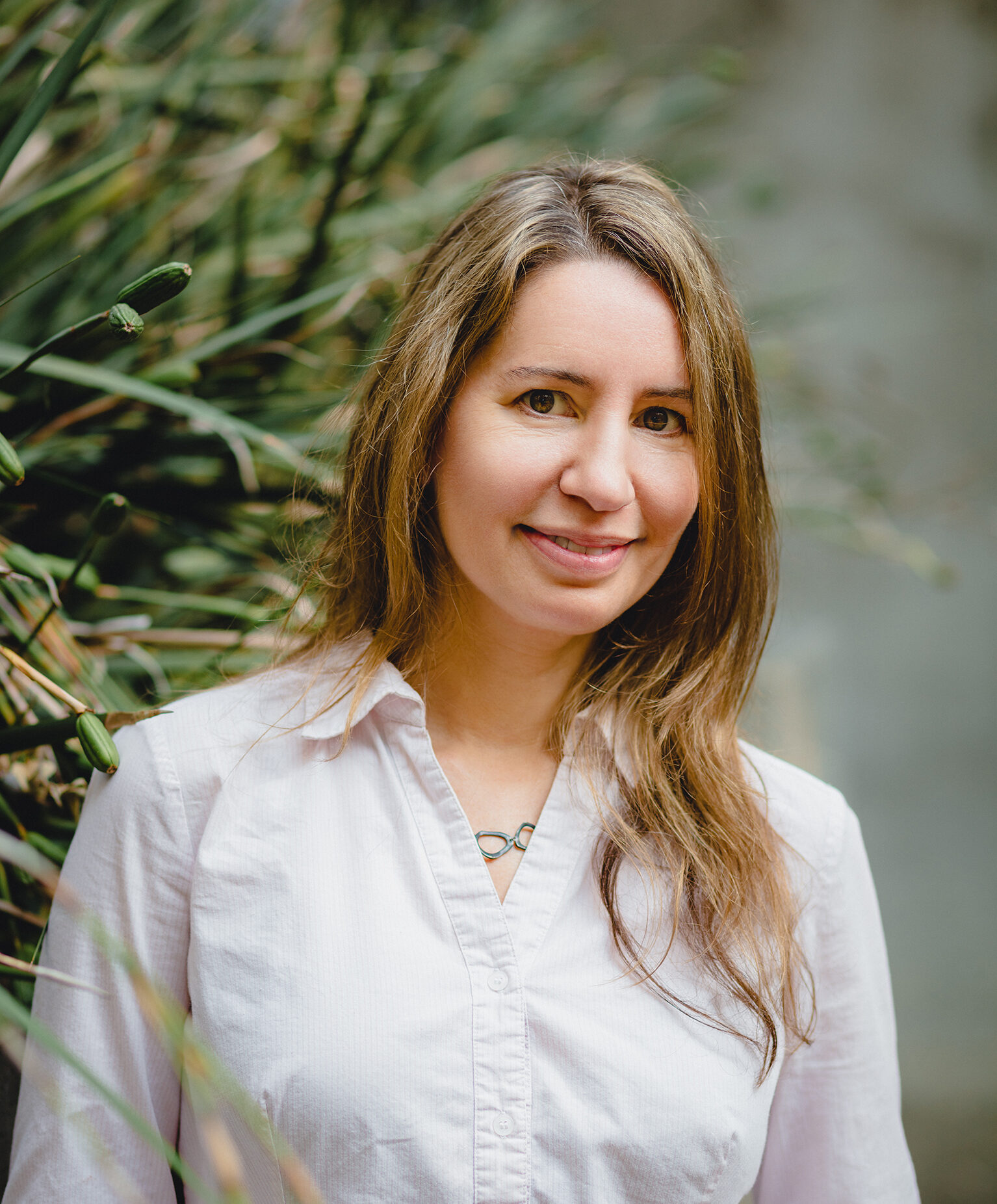
Entrepreneurial Journeys
Faculty FellowsEntrepreneurship for Social Justice
by: niki borghei
Background
“I believe architects are inherently entrepreneurs. We are puzzle makers, not only puzzle solvers,” said Dr. Maria Paz Gutierrez, Associate Professor of Architecture at UC Berkeley. Dr. Gutierrez is developing a solution for unsafe indoor air quality, which is a problem that usually takes an excessive amount of money and energy to solve. But not anymore.
Dr. Gutierrez pioneered the field of living materials in construction from the inception of her research group BIOMS (Bio Input Onto Material Systems) founded in 2008. Her work focuses on innovating the scalability and design of living materials in construction, especially when it comes to biomass such as wood and grass residues.
Currently, Dr. Gutierrez is exploring the use of lichens installed in interior walls as a natural air purification system. “Biowalls have existed since the 1960s when Wolverton, a scientist, discovered through research for NASA that plants could aid in the removal of indoor contaminants,” she explained. “Since then, there’s been a development of biowalls, the term used for indoor plant wall filtration systems composed mostly of tropical plants such as ferns. These plants have a significant evapotranspiration rate which increases humidity and requires air conditioning systems to dehumidify the air. Typically, they must also pump in water as the plants grow. Lichens are adapted to every climate region on earth, from the driest deserts to artic tundra. Consequently, they can be used to detoxify air in almost any climate and indoor environment. This research proposes a lichen block that is a virtually maintenance-free system as it can survive with the humidity from the air and does not produce evapotranspiration.”
Her passion for architecture bloomed slowly throughout her childhood and youth. “My passions in school were mathematics, chemistry, and history. I often vacillated between wanting to study materials science and architecture. But later, I felt my interest in space and cultures led me to architecture as it involved socioeconomic, philosophical, and scientific spheres in its study. Architecture seemed to me a domain rather than a narrow discipline.”

Motivation
Now, Dr. Gutierrez is using her diverse academic passions to serve disadvantaged communities. People who are low-income or elderly are the most vulnerable to the harmful effects of indoor air pollution. Since indoor air quality is both an environmental and social justice issue, she was compelled to transform biowalls into systems that are both low-cost and effective in terms of transportability, scalability, and environmental efficiency.
This doesn’t come without challenges. “As a new research area for the built environment, there are multiple challenges that I have encountered. These range from the complex need to establish new testing protocols and measurements of efficiency and the need for specialized, custom-built equipment to assess efficiencies. It has also involved researching how to best farm lichens, which are organisms that grow slowly and are complex to farm, and yet essential to render this project feasible.”
This, however, is where the entrepreneurial mindset comes in. Every challenge presents an opportunity to innovate.
Where it Leads
Dr. Gutierrez aspires to transform the capacity to render a new generation of living materials, in this case biowalls that are suitable to a wide range of spaces at low-cost. The lichen blocks can tackle the complex indoor air quality and social equity challenges simultaneously.
She is thankful to the Bakar Fellows Program for helping her advance her research to the point that it can be commercialized and make its way to people’s homes. “The Bakar fellowship has been essential to developing research that would have been very difficult to fund for testing scalability. Through it I have been able to continue advancing fundamental research, and I have access to factual support for commercialization paths and outreach to industries and investors essential to bringing research into the real world.”
